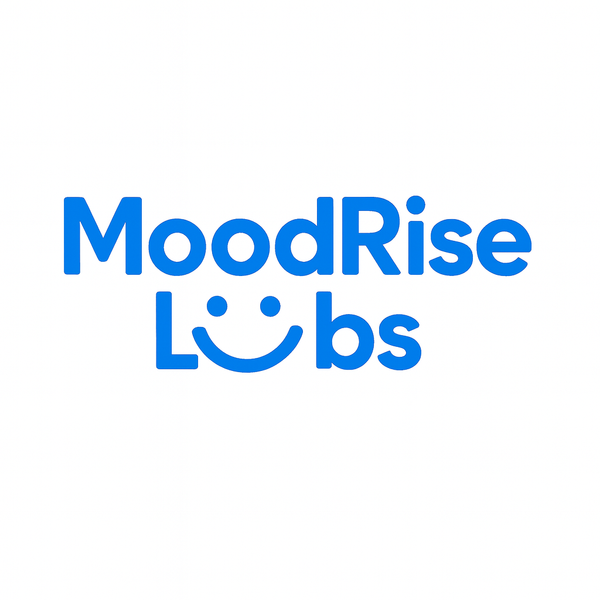Post-Panic Recovery: Nutrients to Bring Your Body Back to Baseline
Introduction
A panic attack can feel like a storm inside the body. The pounding heart, trembling, shortness of breath, dizziness, and overwhelming sense of doom are deeply unsettling. Even after the attack passes, the aftermath often lingers—fatigue, muscle soreness, brain fog, or emotional exhaustion. Many describe this phase as the “panic hangover,” where the nervous system is still frazzled and struggling to return to equilibrium.
This recovery phase is critical. While most people focus on stopping panic in the moment, few realize that post-panic recovery practices can shorten the aftermath, reduce the risk of another episode, and help retrain the body to feel safe again. Nutrition and targeted supplementation play a central role.
This article explores what happens in the body after panic, which nutrients help restore baseline, and how combining them with breathwork and therapy can build resilience for the future.
Looking for supplements for people with Anxiety? Click here.
🌪️ The Aftermath of Panic: What Happens in the Body
A panic attack is essentially a massive adrenaline surge. The sympathetic nervous system floods the body with fight-or-flight chemicals to prepare for danger—even when no actual threat exists.
Key Aftereffects:
Adrenaline crash: Leaves you shaky, tired, and wired at the same time.
Cortisol spike: Keeps the body on edge long after the panic fades.
Neurotransmitter depletion: GABA, serotonin, and dopamine drop, leaving you vulnerable to mood swings.
Electrolyte shifts: Sweating, rapid breathing, and muscle contractions alter sodium, potassium, and magnesium balance.
Blood sugar swings: The body burns glucose rapidly during panic, sometimes leading to crashes.
This is why the aftermath often feels like you’ve run a marathon—your body has, in a sense, just fought a war with itself.
🧠 Why Nutrients Matter for Post-Panic Recovery

Food and supplements provide the raw materials the body needs to restore balance after panic. Without replenishment, recovery is slower and the nervous system remains dysregulated.
Nutrients Help By:
Replenishing neurotransmitters like serotonin and GABA.
Restoring electrolyte and hydration balance.
Supporting adrenal recovery and reducing cortisol.
Rebuilding cellular energy (ATP).
Enhancing resilience against future panic.
🌿 Key Nutrients for Post-Panic Recovery
Magnesium: The Nervous System’s Relaxer
Panic depletes magnesium through adrenaline-driven muscle contraction.
Supports GABA, calms muscle tension, steadies heart rhythm.
Best forms: Glycinate (calm), Citrate (digestion), Threonate (brain).
Dosage: 200–400 mg.
Looking for supplements for people with Anxiety? Click here.
B Vitamins: Nervous System Repair Kit
Stress rapidly burns through B vitamins.
B6: Supports serotonin and GABA production.
B5: Helps adrenal glands recover from cortisol spikes.
B12 & Folate: Rebuild dopamine and serotonin.
Best form: Balanced B Complex.
Vitamin C: The Adrenal Supporter
Cortisol release drains vitamin C.
Powerful antioxidant that calms inflammation after panic.
Dosage: 500–1000 mg after a panic episode.
Omega-3 Fatty Acids: Mood Stabilizers
Reduce inflammation and stabilize neurotransmitters.
Long-term support against anxious spirals.
Dosage: 1000–2000 mg EPA/DHA daily.
Electrolytes: The Calm Restorers
Panic causes sweating, rapid breathing, and shifts in sodium and potassium.
Rehydrating with electrolytes steadies the nervous system.
Sources: Coconut water, electrolyte powders, mineral-rich salt.
Amino Acids: Neurotransmitter Builders
L-Theanine: Promotes calm alpha brain waves.
Taurine: Stabilizes heart rhythm and enhances GABA.
Glycine: Improves relaxation and sleep.
Tryptophan: Precursor to serotonin.
Adaptogens: Resetting the Stress Response
Ashwagandha: Lowers cortisol, restores energy.
Rhodiola: Reduces fatigue after stress.
Holy Basil: Balances blood sugar and calms nerves.
Zinc and Selenium: Mood Micronutrients
Panic and stress increase oxidative stress, depleting minerals.
Zinc supports GABA and serotonin.
Selenium helps regulate thyroid and mood.
Probiotics: Gut–Brain Axis Support
Panic often disrupts digestion.
Gut bacteria produce serotonin and influence stress response.
Strains like Lactobacillus rhamnosus shown to reduce anxiety.
🌬️ Breathwork for Faster Recovery

Supplements restore chemistry, but breathwork helps calm the nervous system in real time.
Post-Panic Techniques:
Physiological Sigh 😮💨: Two quick inhales + one long exhale → lowers heart rate and cortisol fast.
Resonance Breathing 🌊: 5–6 breaths/minute → rebalances vagal tone.
Box Breathing ⬛: 4–4–4–4 pattern → restores steady rhythm.
Pairing an electrolyte drink with 5 minutes of breathwork can accelerate recovery.
Want to try Breathwork? Click Here.
🛋️ Therapy for Long-Term Reset
Nutrients and breathwork reset the body, but therapy resets the mind’s relationship with panic.
Helpful Modalities:
Cognitive Behavioral Therapy (CBT): Reframes catastrophic thinking about panic symptoms.
Somatic Therapy: Helps release physical tension stored in the body.
Mindfulness-Based Stress Reduction (MBSR): Strengthens awareness without judgment.
Therapy trains the nervous system not to overreact to sensations, reducing the cycle of panic.
Looking for online therapy for people with Social Anxiety? Click Here.
🕒 A Post-Panic Recovery Ritual
Step 1: Rehydrate 💧
Glass of water with electrolytes + magnesium.
Step 2: Calm with Nutrients 🌿
B Complex + Vitamin C + Omega-3s.
Step 3: Breathwork 🌬️
5 minutes of resonance breathing or 3 rounds of physiological sigh.
Want to try Breathwork? Click Here.
Step 4: Gentle Nutrition 🥗
Balanced snack with protein + complex carbs (e.g., Greek yogurt with berries).
Step 5: Rest 😴
Journal, stretch, or nap to allow full recovery.
🚫 Mistakes to Avoid
Drinking only plain water without electrolytes (can worsen imbalance).
Skipping meals after panic (blood sugar crashes worsen symptoms).
Overusing caffeine or alcohol post-panic (both stress the system).
Expecting supplements alone to fix panic (therapy and mindfulness matter too).
🌟 Long-Term Benefits of Nutrient Support After Panic
2–4 Weeks: Reduced “panic hangover” symptoms, better energy.
6–8 Weeks: Nervous system becomes more resilient, fewer relapses.
3–6 Months: Panic episodes feel less overwhelming, faster recovery becomes second nature.
🎤 Conclusion
Recovering from panic is more than just “waiting it out.” The aftermath is a chance to nourish your nervous system, restore balance, and reduce vulnerability to future attacks.
By replenishing with magnesium, B vitamins, vitamin C, electrolytes, and adaptogens, alongside breathwork and therapy, you give your body the tools it needs to return to baseline quickly and calmly.
With the right nutrients and practices, panic doesn’t have to leave you drained. Instead, each episode can become an opportunity to strengthen your resilience and reclaim calm.
📚 References
Boyle, N. B., et al. (2017). Magnesium and stress. Nutrients.
Kennedy, D. O., et al. (2011). B vitamins and stress resilience. Human Psychopharmacology.
Brody, S., et al. (2002). Vitamin C and cortisol. Psychopharmacology.
Freeman, M. P., et al. (2006). Omega-3 fatty acids and mood. American Journal of Psychiatry.
Armstrong, L. E. (2012). Hydration and brain function. Journal of the American College of Nutrition.
Panossian, A., & Wikman, G. (2010). Adaptogens and stress. Current Clinical Pharmacology.
Mikkelsen, K., et al. (2016). Micronutrients and mental health. Nutrients.
Cryan, J. F., & Dinan, T. G. (2012). Gut microbiome and stress. Nature Reviews Neuroscience.
Hofmann, S. G., et al. (2010). CBT for anxiety disorders. Journal of Consulting and Clinical Psychology.
Brown, R. P., & Gerbarg, P. L. (2005). Breathing practices for anxiety. Journal of Alternative and Complementary Medicine.
Related Posts
-

Supplements for Staying Present and Grounded
L-Theanine is nature’s calm focus enhancer 🍃. Derived from green tea, it promotes relaxation without drowsiness by balancing GABA, serotonin, and dopamine. Learn how this amino acid supports smooth focus, emotional balance, and mindful presence in daily life.
-
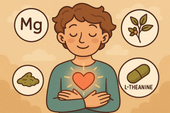
Supplements That Support Emotional Openness
Emotional openness starts in the body 🌿. When your nervous system feels safe, your heart can express freely. Learn how supplements like magnesium, Ashwagandha, and L-theanine support calm connection, balanced emotions, and the courage to stay authentically open.
-
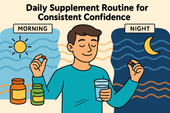
Daily Supplement Routine for Consistent Confidence
Confidence is built through rhythm, not luck 🌿. A daily supplement routine can help your energy, mood, and focus stay balanced from morning to night. Learn how adaptogens, magnesium, and B vitamins work together to create steady calm and lasting self-assurance.
-
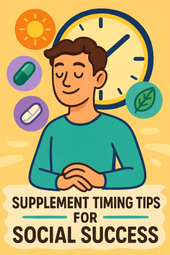
Supplement Timing Tips for Social Success
Social confidence has its own rhythm 🌿. When you time your supplements to match your body’s natural energy cycles, calm and focus align effortlessly. Learn how magnesium, L-theanine, and adaptogens can help you stay grounded, charismatic, and fully present at just the right moment.
-
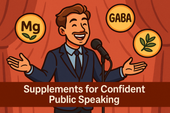
Supplements for Confident Public Speaking
Public speaking confidence begins with biology 🎤🌿. When your nervous system is calm and your neurotransmitters are balanced, your voice, focus, and presence flow naturally. Learn how supplements like magnesium, GABA, and adaptogens can align your body’s chemistry with the calm clarity you need to speak authentically.
-

Travel-Friendly Supplements for On-the-Go Confidence
Magnesium is the ultimate travel mineral for calm and balance ✈️🌿. It relaxes the nervous system, eases stress from jet lag or fatigue, and supports muscle and mental recovery. Discover how this essential nutrient keeps you centered, focused, and energized wherever your journey takes you.
-

Supplements for Confident Video Calls
Magnesium is the mineral that brings calm to both body and mind 🌿. It supports relaxation, better sleep, and a stable mood by regulating cortisol and soothing the nervous system. Learn how magnesium supplements can restore balance, reduce anxiety, and help you feel centered under stress.
-

Ashwagandha for Calming the Stress Response
Ashwagandha helps your body remember how to relax 🌿. As one of the most trusted adaptogens, it calms the stress response by lowering cortisol, soothing the nervous system, and restoring natural energy balance. Learn how this ancient herb promotes deeper sleep, emotional steadiness, and resilience in today’s high-stress world.
-

How GABA Supplements Can Help You Feel Grounded
GABA is the brain’s natural calm signal 🌿. When life feels overwhelming, this neurotransmitter helps quiet mental noise, relax muscles, and restore emotional balance. Learn how GABA supplements can calm the nervous system, reduce anxiety, and help you feel grounded in your body again.
-
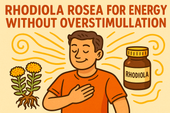
Rhodiola Rosea for Energy Without Overstimulation
Rhodiola rosea offers a rare kind of energy — one rooted in calm, not chaos 🌿. Known as the golden root, this adaptogen enhances endurance, focus, and mood by balancing cortisol and supporting the nervous system. Discover how Rhodiola restores natural vitality without the overstimulation of caffeine or stress-driven fatigue.
-
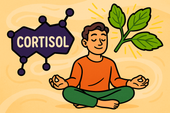
Holy Basil and Cortisol Control
Holy basil, or Tulsi, is one of nature’s most powerful adaptogens 🌿. Revered in Ayurvedic medicine for centuries, it helps balance cortisol, calm the mind, and protect the body from stress. Learn how holy basil restores hormonal harmony, supports energy, and promotes emotional resilience in a fast-paced world.
-
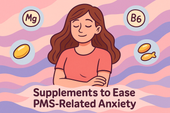
Supplements to Ease PMS-Related Anxiety
Hormones are the body’s messengers — guiding mood, energy, metabolism, and balance. 🌿 When these chemical signals flow in harmony, life feels stable and calm. Learn how nutrients, sleep, and stress management help keep hormonal communication clear, supporting emotional steadiness and overall vitality.
-
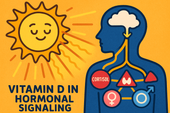
The Role of Vitamin D in Hormonal Signaling
Testosterone is more than a hormone — it’s a signal of strength, motivation, and vitality 💪. Learn how this key molecule shapes energy, mood, muscle growth, and focus in both men and women. Discover how nutrition, vitamin D, and minerals like zinc and magnesium support healthy testosterone signaling for balanced power and performance.
-
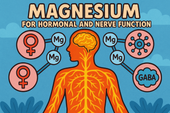
Magnesium for Hormonal and Nerve Function
Magnesium is the mineral that connects calm and vitality ⚡. It fuels nerve transmission, supports hormonal balance, and restores the body’s ability to relax under stress. Learn how magnesium strengthens communication between the nervous and endocrine systems, stabilizing cortisol, thyroid, and reproductive hormones for true equilibrium.
-

Zinc and Its Role in Hormonal Stability
Zinc is one of the body’s most powerful regulators ⚖️—a trace mineral that keeps hormones, metabolism, and energy in perfect rhythm. Learn how zinc supports testosterone, thyroid function, cortisol balance, and emotional stability while protecting against modern stress and deficiency. Discover why restoring zinc can help your body feel grounded, focused, and hormonally resilient.
-
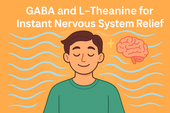
GABA and L-Theanine for Instant Nervous System Relief
When stress hits, your nervous system needs relief — not more stimulation 🌿. Discover how GABA and L-theanine work together to calm the body, quiet racing thoughts, and restore inner balance. Learn the science behind these natural compounds that ease tension, support emotional stability, and bring instant peace without sedation.
-
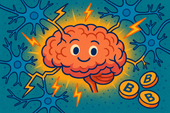
B-Vitamins for Faster Nerve Communication
Vitamin B1, or thiamine, is your brain’s ignition key 🔑—turning food into cellular energy and powering rapid nerve signaling. Discover how this essential nutrient fuels neurotransmitter activity, supports focus and coordination, and prevents fatigue or mental fog. Learn why maintaining optimal thiamine levels keeps your nerves firing fast and your mind sharp.
-

Supplements That Help You Stay Alert Without Anxiety
L-theanine is nature’s secret for calm focus and balanced energy 🌿. Found in green tea, this gentle amino acid promotes relaxation, supports alpha brain waves, and helps you stay alert without stress or grogginess. Discover how L-theanine can enhance focus, improve sleep quality, and restore mental calm in a fast-paced world.
-
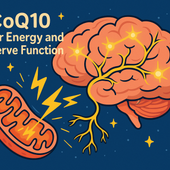
CoQ10 for Energy and Nerve Function
CoQ10 powers every cell in your body—from your heart to your brain ⚡. Learn how this essential compound fuels mitochondria, boosts nerve function, and protects your brain from oxidative stress. Discover how supplementing with CoQ10 can restore energy, sharpen focus, and support long-term neurological vitality.
-
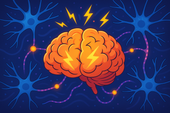
Supplements That Support Nerve Signaling for Mental Energy
Your brain’s electrical network depends on magnesium—one of the most vital minerals for nerve signaling, calm focus, and steady mental energy ⚡. Learn how this essential nutrient powers neurotransmission, supports relaxation, and helps protect your nervous system from stress overload—so your mind feels balanced, alert, and resilient every day.
-
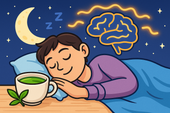
L-Theanine for Sleep Without Grogginess
L-theanine offers a natural path to better sleep—without the next-day fog. 🌙 Found in green tea, this gentle amino acid calms the mind, lowers stress hormones, and promotes deep relaxation without sedation. Learn how L-theanine balances your brainwaves, reduces nighttime anxiety, and helps you wake up refreshed, alert, and clear-minded.
-
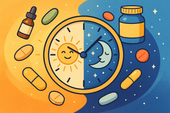
Supplements to Support the Circadian Rhythm
Your body’s natural clock depends on more than just sunlight—it also relies on key nutrients to stay in sync. 🌞🌙 Discover the best supplements to support your circadian rhythm, from melatonin and magnesium for deep sleep to vitamin D and adaptogens for morning energy. Learn how to realign your internal clock for better rest, sharper focus, and stable mood every day.
-

Melatonin and Cortisol: The Night vs. Day Hormones
Melatonin and cortisol are your body’s night-and-day hormones—one helping you drift into deep sleep, the other powering your alertness each morning. 🌙☀️ Learn how these two forces work together to regulate your energy, mood, and recovery. Discover how modern stress, artificial light, and poor routines can throw them off balance—and how to naturally reset your rhythm for calm nights and focused days.
-
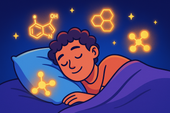
Supplements for Deeper Sleep and Nervous System Reset
Struggling to sleep even when you’re exhausted? 🌙 Discover how to reset your nervous system and achieve deeper, more restorative rest with the right blend of supplements, breathwork, and therapy. From magnesium and L-theanine to slow exhalations and somatic healing, this guide helps you rebuild your body’s natural rhythm of calm and recovery—so you can wake up truly renewed.
-
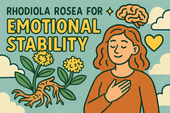
Rhodiola Rosea for Emotional Stability: Finding Balance Through Resilience
Stress is the body’s natural alarm system — useful in bursts, but draining when it never turns off. Learning to regulate it helps restore calm focus, emotional balance, and physical vitality. 🌿💫
-
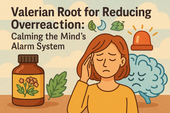
Valerian Root for Reducing Overreaction: Calming the Mind’s Alarm System
GABA is the brain’s natural brake pedal — calming overstimulation and helping you think clearly under stress. When balanced, it brings a sense of inner peace, emotional control, and focus. 🌿🧠💫
-

Supporting Adrenal Health for a Steadier Mood
Cortisol is the body’s built-in stress alarm — essential in short bursts but harmful when constantly elevated. Learning to balance it naturally restores calm, focus, and emotional stability. 🌿⚖️
-
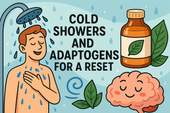
Cold Showers and Adaptogens for a Reset: Reclaiming Energy, Calm, and Control
Adaptogens help the body adapt to stress, restoring calm energy and balance. These ancient herbs strengthen resilience, regulate mood, and support focus — helping you stay grounded through life’s ups and downs. 🌿💫
-
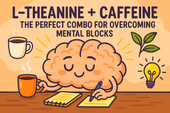
L-Theanine + Caffeine: The Perfect Combo for Overcoming Mental Blocks
Neurotransmitters are the brain’s messengers — tiny molecules that shape how we think, feel, and focus. When they’re in balance, we experience calm energy, clear thinking, and emotional harmony. 🌿🧠✨
-
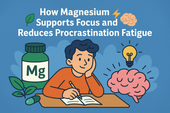
How Magnesium Supports Focus and Reduces Procrastination Fatigue
Magnesium is the quiet mineral behind mental clarity and steady focus. By calming the nervous system and restoring cellular energy, it helps transform fatigue and overthinking into calm, productive flow. 🌿⚡🧠
-

B Vitamins for Beating Procrastination and Boosting Energy
Procrastination isn’t just a mindset — it’s often a signal of low energy and nutrient depletion. B vitamins recharge the brain’s motivation circuits, boosting focus, clarity, and the drive to take action. 🌿⚡🧠
-
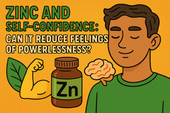
Zinc and Self-Confidence: Can It Reduce Feelings of Powerlessness?
Zinc isn’t just a mineral — it’s the foundation of emotional strength. By balancing neurotransmitters and calming the nervous system, it helps you feel more centered, assertive, and confident from the inside out. 🌿💪
-
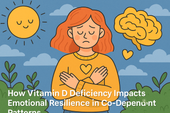
How Vitamin D Deficiency Impacts Emotional Resilience in Co-Dependent Patterns
Co-dependency is the emotional tug-of-war between connection and self-loss — a pattern born from giving too much and receiving too little. Learning to untangle this dynamic allows for real love rooted in balance, not fear. 🌿💛
-
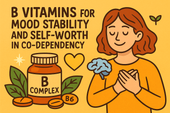
B Vitamins for Mood Stability and Self-Worth in Co-Dependency
Vitamin B1, or thiamine, powers both the body and the brain — fueling focus, energy, and emotional clarity. Supporting your nervous system with this essential nutrient helps restore calm and mental resilience. 🌿⚡🧠
-
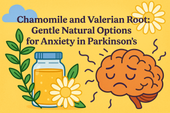
Chamomile and Valerian Root: Gentle Natural Options for Anxiety in Parkinson’s
Anxiety often feels like a storm inside the mind — racing thoughts, tightness, and unease that make it hard to focus or rest. But learning to understand and calm that inner storm opens the door to peace and emotional balance. 🌿🧠
-
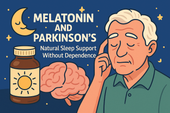
Melatonin and Parkinson’s: Natural Sleep Support Without Dependence
Melatonin is the body’s natural sleep hormone — guiding your mind into rest and your body into recovery. Supporting its natural rhythm can improve sleep quality, mood, and overall health without dependence. 🌙🧠
-
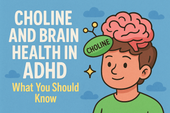
Choline and Brain Health in ADHD: What You Should Know
Inflammation can quietly affect both the body and mind, disrupting focus, mood, and energy. Understanding how it works — and how to calm it — is key to restoring balance, clarity, and long-term health. 🌿🧠
-
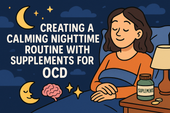
Creating a Calming Nighttime Routine with Supplements for OCD
Sleep is the brain’s nightly repair ritual — a time when emotional chaos settles and clarity returns. Prioritizing deep rest restores focus, calm, and resilience, helping both the body and mind recover naturally. 🌙🧠
-
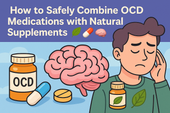
How to Safely Combine OCD Medications with Natural Supplements
Supplements bridge the gap between nutrition and mental wellness — supporting focus, calm, and energy from within. The right combination of nutrients can help balance mood, sharpen the mind, and restore long-term resilience. 🌿🧠
-
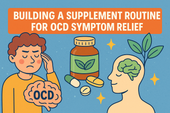
Building a Supplement Routine for OCD Symptom Relief
OCD can feel like being trapped in your own thoughts — a battle between control and chaos. Understanding the science behind these cycles is the first step toward breaking free and finding calm within the mind. 🌿🧠
-
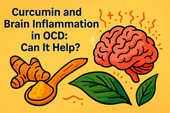
Curcumin and Brain Inflammation in OCD: Can It Help?
Inflammation doesn’t just affect the body — it can silently influence the brain, fueling anxiety, fatigue, and mental fog. By understanding how inflammation works, we can learn how to calm the nervous system and restore inner balance. 🌿🧠
-
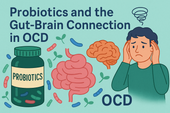
Probiotics and the Gut-Brain Connection in OCD
Serotonin, often called the “feel-good” chemical, shapes our mood, focus, and emotional balance. By keeping this neurotransmitter in harmony, we support calm thinking, better sleep, and greater mental resilience. 🌿🧠
-

B Vitamins and OCD: Supporting Energy and Neurotransmitter Balance
OCD isn’t just about habits — it’s about the brain’s struggle to find control in chaos. Understanding the neurological roots behind intrusive thoughts can help replace fear with clarity and guide healing toward calm awareness. 🌿🧠
-
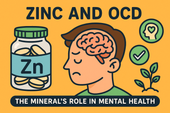
Zinc and OCD: The Mineral’s Role in Mental Health
Zinc is more than a trace mineral — it’s a key regulator of mood, memory, and emotional balance. By stabilizing neurotransmitters like serotonin and glutamate, zinc helps calm obsessive thought patterns and supports overall mental clarity. 🌿🧠
-
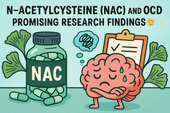
N-Acetylcysteine (NAC) and OCD: Promising Research Findings
Antioxidants act as the body’s natural defense system, neutralizing free radicals that damage brain cells and worsen anxiety or fatigue. Supporting antioxidant balance with nutrition and supplements helps protect focus, memory, and emotional stability. 🌿🧠
-
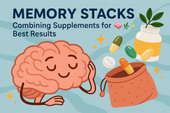
Memory Stacks: Combining Supplements for Best Results
Memory weaves the story of who we are — connecting past, present, and future through every experience we store and recall. Strengthening memory means nurturing the brain’s energy, balance, and emotional calm so learning becomes effortless. 🌿🧠
-
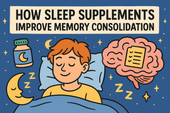
How Sleep Supplements Improve Memory Consolidation
Stress can cloud thinking, disrupt sleep, and weaken memory — but understanding its effects on the brain is the first step toward calm. By learning to regulate the nervous system, we can protect focus, energy, and emotional balance. 🌿🧠
-
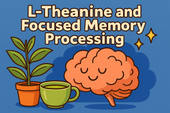
L-Theanine and Focused Memory Processing
Science is the art of curiosity and precision — a quest to understand the unseen patterns that shape life. From molecules to galaxies, every discovery begins with observation, imagination, and the courage to ask “why.” 🔬💡
-
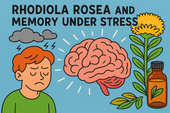
Rhodiola Rosea and Memory Under Stress
Stress clouds memory, slows thinking, and drains energy — but the good news is, the brain can recover. By understanding how stress affects focus and emotion, we can learn to regulate it, restore clarity, and protect long-term cognitive health. 🌿🧠
-
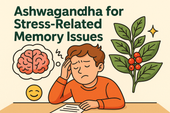
Ashwagandha for Stress-Related Memory Issues
Adaptogens are nature’s answer to modern stress. These powerful herbs — like Ashwagandha, Rhodiola, and Holy Basil — help balance cortisol, support calm focus, and strengthen the body’s resilience, bringing the mind back to harmony. 🌿🧘♀️
